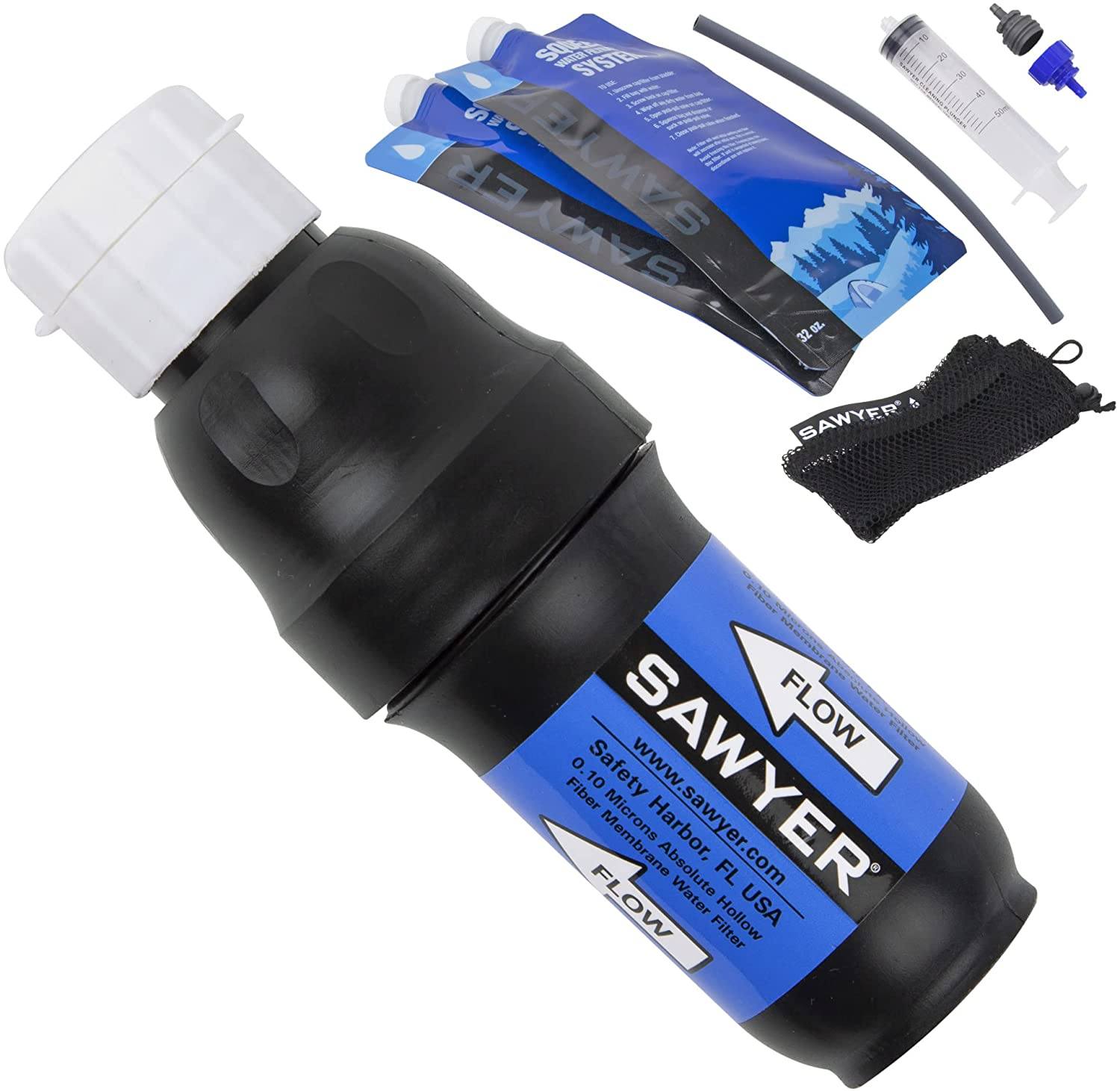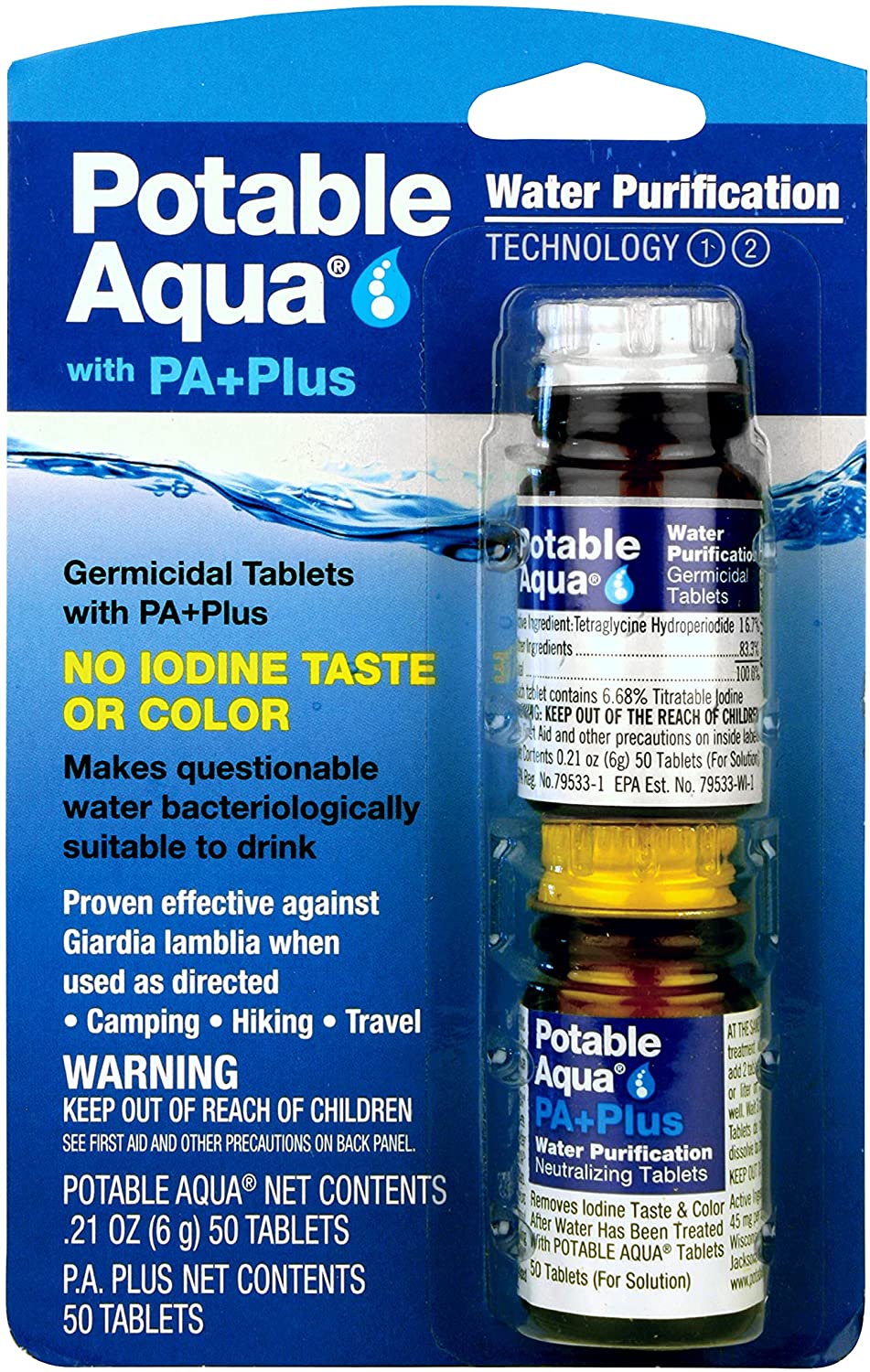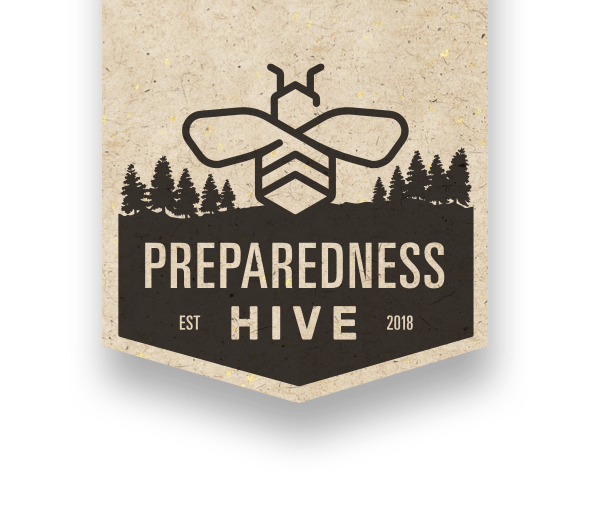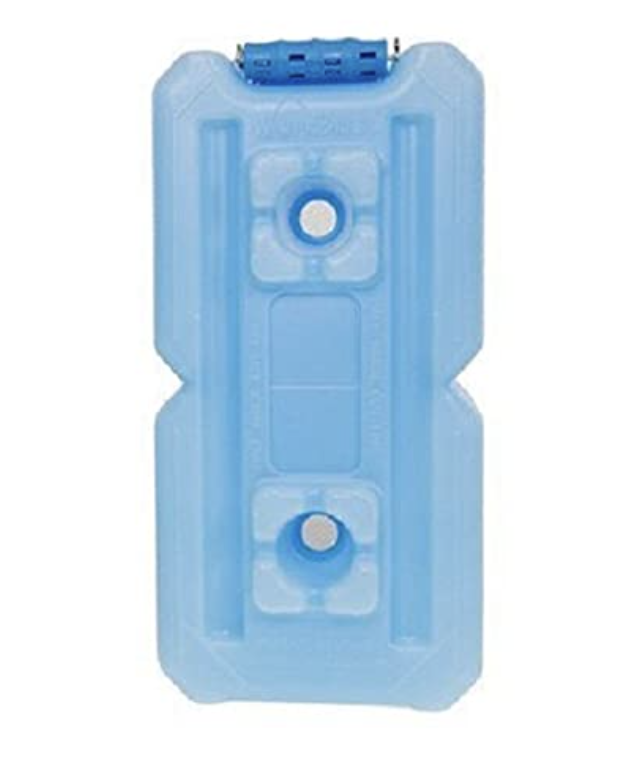Water, without a doubt, is the most important essential of all “Essentials”. Generally speaking, a person can live for about three days without consuming any water. This will vary based on your climate and activity level, but to stay hydrated you need to drink 50-100% of your bodyweight in fluid ounces each day (pounds to ounces, respectively). So if you weigh 150 pounds, you need at least 75 ounces of water, or ideally 150. An easy failsafe is to just plan for one gallon of water per person, per day.
Essentials:
water
Key Considerations: Depending on the scenario, water from your tap may no longer be available or may not be safe to drink, even in a small-scale disaster. This also applies to those with a well in rural areas, considering most use an electric pump to pull the water up. This said, there are a few options when it comes to acquiring water for emergency use.
1. Establish a means to simply gather it

If you have access to a nearby body of water (pool, creek, pond, river, etc.), you can opt for a means to just gather it as needed and then filter or purify it (see the differences below) for drinking purposes. This is highly contingent on the distance to your house of course, as well as the type and severity of a given disaster and the potential safety concerns of traveling to and from your home to collect water on a regular basis.
2. Install a hand pump.

If you have a well, even one with an electric pump, there are several options for installing a hand pump onto an existing well. Some, like Bison Pumps, can even be installed inside your home to allow you to pressurize your existing system by hand. Here are a few brands we have used and recommend:
- Bison Pumps (Deep and shallow well options)
- Simple Pumps (Deep and shallow well options)
- Flojak Systems (Up to 150’ depth)
Filtering & Purification
Filtering and purification are two very different things, and you should be aware of when and how to use each method. For the most part, both can provide you with potable drinking water, but 90-95% “pure” water can only be achieved through one of four purification methods: reverse-osmosis, distillation, chemical and deionization. Fortunately, water doesn’t have to be that pure to be considered safe for us to drink.
Water Filtering
Filtering water can happen in a variety of ways, but most typically require some kind of porous material to extract particles, chemicals, bacteria and viruses from the water. Although, not all are created equal with regards to their filtering ability, specifically their micron rating. Most bacteria, like E. coli, can be filtered out with a .2 micron filter, but many viruses and other contaminants require a .1 micron rating. Filters can also help with taste and odor as well. My favorite all around filter, which also happens to have a .1 micron rating, is a Sawyer Squeeze. This little guy has the capability of filtering up to 100,000 gallons of water, and costs less than $30! At a weight of only 2 ounces, they’re great for camping, hiking and traveling of any kind as well. There are many other options on the market these days, but there’s absolutely nothing out there that will beat this in terms of value. For a permanent dwelling, like your home or bug-out location, we recommend a Berkey Filtration System. They are absolutely exceptional in quality and craftsmanship, and worth every penny!
Water Purification
You can purify water in a variety of ways, and this will typically revolve around your circumstances at the time it’s needed. For a permanent dwelling, like your home or bug-out location, a reverse-osmosis or distillation system can be used. For traveling, hiking and/or camping, purification tablets, like iodine tabs or Katadyn’s Micropur tablets (my personal recommendation as they have the least effect on taste) would be much more practical.
Be sure to pay close attention to the instructions on these too, as some can take several hours to purify your water. You can also just bring water to a boil to kill off any harmful contaminants, but you’ll have to wait for the water to cool before drinking it of course. This also takes a good deal of time when you factor in the time it takes to build your fire, pull out your cooking gear, boil the water and then wait for it to cool.
All that said, a combination of the two is really your best solution for most circumstances. Purification is really only needed if you don’t have a good enough filter to remove most of the harmful contaminants. However, going back to Rule #2 (download Stage 1 of our guide to everyday preparedness if you don’t know what this is!), you should always have multiple options when it comes to water, especially if you’re going to be traveling by foot. Having a small filter like the Sawyer Squeeze, along with a dozen or more purification tablets (depending on the length of your trip) and a way to boil water is highly recommended to have with your gear at all times.
recommendations
Now that you have a fairly basic understanding of water as well as some of the essential requirements we have as humans, here’s the short list of our recommendations to give you a 2-week emergency supply in your home:
14 Gallons of water per person
As for exactly what to stock, there’s just over three gallons of water in a 24-pack of bottled water (16.9 oz bottles). If that’s easiest for you to get and store for now, go for it. One and two-gallon jugs at most grocery stores are great too. You can also fill 2-Liter bottles with your tap water, but make sure they are sanitized before doing so. You will want to put a few drops of bleach in each one when storing (2 drops per liter/quart), just for good measure. If you can afford it and want to plan ahead a little, you can buy a couple of 3.5 gallon WaterBricks and fill those instead.
Sawyer Squeeze
In fact, get two (Rule #2). There are a few others worthy of mention here, but for the cost these are just really hard to beat. Some runners up include the Sawyer Mini, Sawyer Micro Squeeze and the Katadyn Pocket Water Filter.
20 Pack Katadyn micropur tablets
As we mentioned, Micropur tablets have the least effect on taste of all those we’ve tried to date. These take about 4 hours to purify up to a quart of water (for each tablet), and work great as a backup in a day pack or bugout bag!

Sawyer Squeeze Water Filtration System

Katadyn Micropur MP1 Water Purification Tablets



